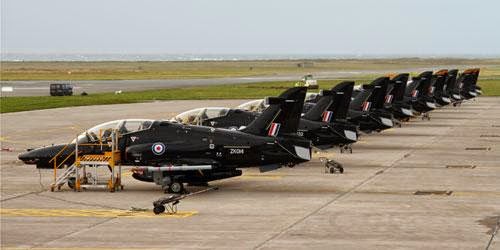 | |
| Poor value for money? Or vital transport link? The Anglesey-Cardiff "Ieuan Air" service has its critics. (Pic : Wales Online) |
The direct air service between Cardiff and Anglesey has been a political football since it was first introduced. Some consider it a vital public service air link; others consider it a complete waste of money.
The National Assembly's Public Accounts Committee undertook a short inquiry into its future role, as well as evaluating its current commercial performance due to the high levels of public subsidy it receives and falls in passenger numbers (pdf).
The Committee's summarised recommendations were that :
- Data collection should be improved - preferably using an independent source - to avoid discrepancies between what the Civil Aviation Authority (CAA) and airline operators report.
- The Welsh Government should undertake research on who uses the air-link and why, as well as research into the long-term passenger number trends.
- Any future tender for the air-link should include comprehensive marketing plans, and the Welsh Government should try to attract as many bidders as possible in order to maximise the benefits and opportunities of the air-link.
Background & Current Performance
 |
| £9million has been spent on the air link since 2007, including £1.5million on terminal facilities at RAF Valley. (Pic : anglesey-today.com) |
The Welsh Government subsidises the service under the EU's Public Service Obligation (PSO) rules, which allows governments to subsidise services that are key to economic development but are otherwise commercial unviable. The subsidy currently amounts to £1.2million per year.
The Ministry of Defence are also involved as they run the RAF Valley terminus of the flight. Anglesey Council and a company called Europa also fund/run the terminal services at the airbase.
The total cost of the air service from May 2007 to March 2013 was just over £9million. This sum includes the £1.5million to build the passenger terminal at RAF Valley and various grants to Anglesey Council.
65,703 passengers used the service over the same time period, and the subsidy per passenger is £86. Although passenger numbers exceeded expectations in the first two years, they've since declined by 12.5% between 2011-2013.
There were differences between the passenger numbers reported by the CAA and those provided by the Welsh Government (via the service operator) – the latter's numbers being higher than the CAA's. However, since 2012 these discrepancies have become smaller and didn't cause the Committee any great concern.
As for the reasons why passenger numbers are falling, the University of South Wales' Martin Evans said that passengers were "price sensitive" and even the slightest increase in fares put them off. The Welsh Government, however, pointed towards figures that showed an increase in the number of advanced bookings and overall passenger numbers.
The Welsh Government have commissioned ARUP to review the marketing of the air service, fares strategy and support to maximise passenger numbers. The contract currently grants the operators £20-25,000 per year to market the service. The Committee believe more needs to be done - such as advertising connecting bus services - and all of that should be part of the tendering process.
In terms of the type of passenger, it was said between half and two-thirds of passengers were business passengers, but there was no data on how many of these were public sector workers. The Committee were concerned because public sector journeys would ultimately be paid for entirely by taxpayers, weakening the subsidy's value for money case.
With regard value for money, there hasn't been an evaluation of the benefits of the air service since 2008, and without this information it might be more difficult for the Welsh Government to justify further subsidy. Some of this will be explored further in the ARUP review, which will give a better idea of who uses the service and why, but it was argued it might be difficult to tie economic data to the service.
The Contract
 |
| Following the 2011 Cork air crash, there've been concerns raised at EU level about "virtual airline" arrangements for air services. (Pic : RTE) |
There's a slightly complicated back story as to how the current operators got the franchise.
When the contract was up for re-tender in 2010, the only bidder was Highland Airways. But because the Welsh Government had concerns over the financial stability of the company, they rejected Highland Airways offer and put out an "emergency tender" which was awarded to Manx2.
However, because Manx2 were a "virtual airline" (they outsource all operational roles), this fell foul of EU PSO rules, meaning another company had to be on board at the same time – hence why there are two companies involved in running the air link.
As for the relevance of this, an accident at Cork Airport in February 2011 – which killed 6 people – involved an aircraft operated by the same company Manx2 used to provide the Anglesey-Cardiff link (FLM). The company has since had its aviation accreditation withdrawn, and this dual-company arrangement has been flagged up to the European Commission as a concern which should be taken into consideration when awarding any new Anglesey-Cardiff contract in December.
The Committee also had concerns about the timing of the tender and contract award, which is supposed to go out (quite literally) now if it's going to be awarded in December. The Committee were worried that the timescales are too tight and there's little room for contingencies.
The Future of the Air-Link
 |
| Due to MOD restrictions, the air link can only operate 5 days a week. (Pic : Royal Air Force) |
- Increasing the size of the aircraft – The current aircraft has 18 seats, but previous tenders included 29-50 seater aircraft. The size of the aircraft was reduced by the Welsh Government due to concerns over air passenger duty and because RAF Valley doesn't meet UK guidelines for passenger aircraft bigger than 18 seats. Increasing the size of the aircraft would mean fewer passengers would be turned away and, if marketed correctly, could boost incomes and make it more commercially viable.
- More stops? – This might mean adding an extra stop or two (Harwarden in Flintshire and Caernarfon airport were mooted). Harwarden was ruled out due to competition from rail, while Caernarfon would need lots of work to bring it up to spec. A third stop could also put off passengers as it would increase journey times.
- 7 day a week service – At the moment only a 5 day service is possible due to military restrictions, and any moves to change this will need to be discussed with the RAF.
- Changes to state aid rules – PSO rules were recently changed which mean there are fewer constraints on what the Welsh Government can or can't do. An example was given where the Cardiff-Anglesey aircraft could be used to make commercial flights from Cardiff-Paris in the downtime between Anglesey flights.
A bit of afters
 |
| The inquiry has been criticised for being "too simplistic", and it failed to draw comparisons with other PSO services in the UK and rest of Europe. (Pic : via Wikipedia) |
I've read my fair share of committee reports over the last three years or so. The lack of any comparison with other PSO services in the UK (like those in the Scottish Highlands & Islands) was a glaring omission. Mike Hedges was right. I don't think it would've really changed the overall conclusions, but without those comparisons it's hard to say whether the air link is truly under-performing or not.
The Lib Dems have long called for the service to be scrapped, and chimed in again this time, describing the air link as "wasteful and polluting".
The air link currently reduces the NW Wales-Cardiff journey time from 4-5 hours (by car or train) to around 90 minutes. If the service were well-used it could be considered an absolute bargain. The £1.2million per year saved by scrapping the service would do diddly squat to improve north-south transport links, and the Lib Dems have consistently failed to say what they would do with such an enormous bounty. The cost of doubling the Wrexham-Chester railway line is £44million alone.
If money were no object, ideally we would build a floating runway in the Menai Straits off Bangor. That would be the optimum place for a NW Wales-Cardiff air link, and being right next to Snowdonia should provide a steady stream of tourist traffic too. However, like it or not, RAF Valley – despite being poorly located – is the only suitable facility.
It looks as though the air link has an uncertain future, and criticisms about its performance stand up. There's just a danger that through this inquiry we only know the price of it whilst ignoring its value.












0 comments:
Post a Comment